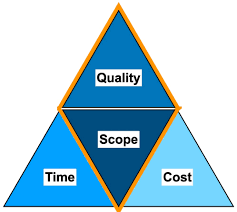
In today’s competitive job market, organizations are inundated with a deluge of resumes for every open position. To streamline the hiring process and manage this influx, many companies have turned to Applicant Tracking Systems (ATS) that rely heavily on keyword matching to screen potential candidates. However, this automated approach is not only inefficient but also unjustified, leading to significant drawbacks and missed opportunities in identifying the best talent for the job.

The Unjustified Reign of Keyword-Driven Screening
The use of ATS software has become ubiquitous in modern recruitment practices, with the promise of saving time and effort by quickly filtering through a large volume of resumes. These systems are programmed to scan resumes for specific keywords related to job requirements, skills, and qualifications set by the hiring team. Candidates whose resumes contain these keywords are then flagged for further review, while those lacking them are often discarded without human intervention.
However, this reliance on keywords overlooks the nuances of a candidate’s experience, achievements, and potential cultural fit within the organization. It fails to capture the full scope of a candidate’s capabilities beyond what is explicitly stated in their resume, leading to a narrow and incomplete view of potential candidates.
The Unintended Consequences of Keyword-Centric Screening
Keyword-driven screening can have severe consequences for the recruitment process and the future of the organization:
1. Ineffective Candidate Evaluation: Relying solely on keywords overlooks the nuances of a candidate’s experience, achievements, and potential cultural fit within the organization. It fails to capture the full scope of a candidate’s capabilities beyond what is explicitly stated in their resume.
2. Perpetuating Bias and Discrimination: Keyword matching can inadvertently perpetuate bias in hiring by favoring candidates who use specific industry buzzwords or have certain educational backgrounds. This can result in overlooking qualified candidates from diverse backgrounds or unconventional career paths.
3. Wasted Opportunities for Hidden Gems: Exceptional candidates who possess valuable skills or experiences not captured by standard keywords may be unfairly excluded from consideration. Creativity, adaptability, and potential for growth are often overlooked in favor of rigid keyword criteria.
4. Negative Candidate Experience: Candidates who feel their applications are being judged solely on keyword matches may perceive the hiring process as impersonal and dehumanizing. This can damage the employer brand and deter top talent from engaging with the organization in the future.
5. Identify incorrect candidates: This has been a recent experience, where in based on a few key words, the hiring team is short listing potential candidates, when reviewed / test evaluated / interview – these candidates are found lacking in their relevant skills as quoted on their problems.

The Need for a Holistic Approach
To address the shortcomings of keyword-driven screening and enhance the quality of candidate selection, organizations must adopt a more holistic approach to recruitment:
1. Define Clear Job Requirements: Instead of relying solely on keywords, hiring teams should clearly outline the essential skills, experiences, and qualities required for each role. This ensures that screening criteria are aligned with actual job needs.
2. Utilize Technology Wisely: While ATS systems can be valuable tools for managing high volumes of applications, they should be used as aids rather than substitutes for human judgment. Combining automated screening with manual review can help identify top talent more effectively.
3. Emphasize Soft Skills and Potential: Look beyond technical qualifications and prioritize soft skills such as communication, problem-solving, and adaptability. Assessing a candidate’s potential for growth and cultural fit can lead to more successful long-term hires.
4. Implement Diverse Hiring Practices: Actively seek out candidates from diverse backgrounds and experiences to foster innovation and inclusivity within the organization. Encourage hiring teams to look beyond traditional metrics and consider a wide range of perspectives.
Conclusion
In conclusion, the reign of keyword-driven candidate screening is not only inefficient but also unjustified. It leads to missed opportunities, bias, and subpar hiring decisions. By adopting a more balanced approach that combines technology with human judgment, organizations can improve their ability to identify top talent that aligns with their values and goals. Embracing diversity, emphasizing potential over checkboxes, and prioritizing candidate experience are key steps towards building a stronger workforce capable of driving innovation and success in today’s dynamic business landscape.

